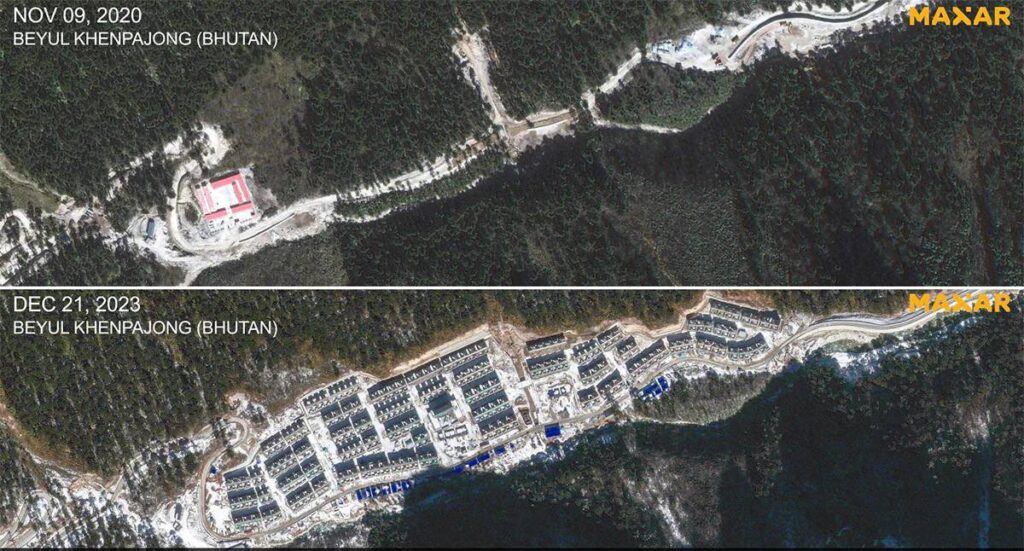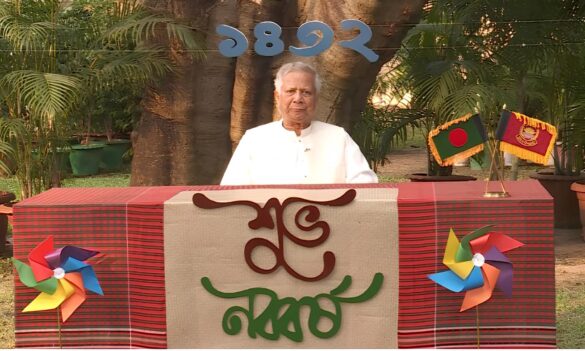In a recent development amidst ongoing border talks between Bhutan and China, reports featuring satellite imagery acquired less than a month ago have surfaced, revealing China’s swift encroachment into northeast Bhutan, particularly in the culturally significant Beyul Khenpajong river valley.
The construction of townships, undertaken without Bhutan’s approval, has intensified tensions in the region, mirroring China’s assertive posture witnessed in the South China Sea and India’s Arunachal Pradesh. The construction activities persist despite ongoing border discussions between Bhutan and China, leaving Bhutan with few options to counter the unfolding situation. Satellite images vividly illustrate the expansion of Chinese structures in the Jakarlung Valley over the past two years, encompassing residential areas and military installations. This advancement into Bhutan’s northern, western, and southwestern peripheries follows a concerning pattern of illicit land acquisition in the Himalayas.
Notably, according to reliable sources as reported, an expert on Tibetan history at the School of Oriental and African Studies (SOAS) in London, Professor Robert Barnett, highlighted China’s questionable claim over the culturally significant area, leaving Bhutan in a precarious position with limited response options. The royal family’s ancestral ties to Beyul further exacerbate concerns, as the Bhutanese government finds itself powerless to halt the Chinese settlement.
Siliguri Corridor threatened: China’s expansion poses broader challenges
Chinese workers have additionally established three villages along the Amu Chu river valley, posing a potential threat to the Siliguri Corridor, a matter of concern for India. The corridor is a crucial link between India’s northeastern states and the rest of the country.
As Bhutan prepares to elect a new parliament in Thimphu on Tuesday, both China and India closely monitor the contest, eyeing strategic contested border zones. Analysts warn that China’s expansionist activities in Bhutan signify a broader geopolitical challenge in the region.
The “cooperation agreement” signed between Bhutan and China in October, following talks over their disputed northern frontier, has heightened concerns in India. Bhutan, traditionally considered a buffer state under India’s orbit, now faces increased scrutiny over its strategic alignment. Overall, China’s actions in the Jakarlung Valley not only challenge Bhutan’s sovereignty but also raise anxieties regarding India’s security interests.
Indian politician Shashi Tharoor on Sunday expressed concern on Sunday, stating on platform X, “The dwindling band of apologists for China now have one more reason to shed their illusions about the malign intentions of our northern neighbor—a shameless land grab in Bhutan that aims to threaten the Siliguri corridor. Appeasing China doesn’t work.”
In December, King Jigme Khesar Namgyel Wangchuck of Bhutan declared the establishment of a special economic zone along the country’s border with India. India, in response, has unveiled a series of connectivity projects, including the proposal for a railway line connecting to Bhutan.
Read here: Bhutan plans “International City Project” on Assam Border for economic growth







